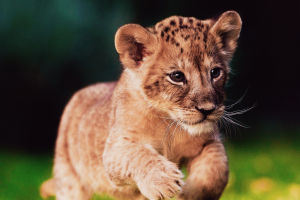Lions generally eat relatively large animals. They are carnivores. Many people think that lions will choose thighs or buttocks to eat their prey. In fact, it is not. Lions often choose to start from the belly.
It is convenient to go directly under the mouth, and there is no bone obstruction, which is convenient for direct swallowing.
Lion hunting can be divided into two forms: individual hunting and group hunting.
Because the lion is a master in sprinting, but inferior in long-distance running. So basically ambush tactics. The location of the ambush is also very particular.
The best location is by the pond, where animals most often appear. In the sweltering heat of Africa, water is precious and necessary. If a lion-controlled territory has a source of water, then their living conditions are quite good.
Although it is said that lions eat everything, there are only a few main foods in the lion's diet. Predation of different foods requires different strategies and methods.
To deal with small prey, you can act alone, but to deal with large prey, you need to act collectively.
Zebras are the favorite prey of lions. Zebras migrate like wildebeests. If you can't eat wildebeest, you can't eat zebras. Zebras are harder to catch than wildebeests.
Because the black and white stripes on the body can make the lion hallucinate, it is difficult to find the target of attack in the group. Although zebras do not have horns, their hooves and incisors should not be underestimated, so when attacking zebras, you must avoid the back and front, and attack from the side.
In some cases, the zebra leader will lead his subordinates to form a circle, with the head facing inward and the hooves facing outward, and the lion often retreats in the face of the zebra's gossip array.
Lions in the wild live 10 to 14 years, and in captivity they live longer, usually more than 20 years. Lives in savannas and grasslands, but also occurs in shrubs and dry forests.
They often hunt other warm-blooded animals in ambush. Distributed in African grasslands, Asia and India. The tail is more developed. Known as the "king of the grasslands", it is the top feline carnivore in Africa.
The average weight of wild African male lions is 240 kilograms and their total length can reach 3.2 meters. The lion's hair is short, and the body color is light gray, yellow, or brown.
The male lion also has a long mane, which is light brown, dark brown, black, etc., and the long mane extends to the shoulders and chest.
When you encounter a "roaring lion," the first thing you do is stay still and look away. You also don't point something at it. The most important thing is not to turn around and run, as this will surely trigger the lion's predatory instincts, causing it to start charging and raiding. Instead, you should continue to face the lion and slowly return to a safe place, such as your car.
If you look a little closer, you can really look at the animal's tail. When a lion is angry or feels threatened, it wiggles its tail from side to side. If it is hunting prey, it will keep its tail stiff, twitching every now and then. If you have something in your hand, throw it to the lion. Even if the lion rushes at you, never run.


